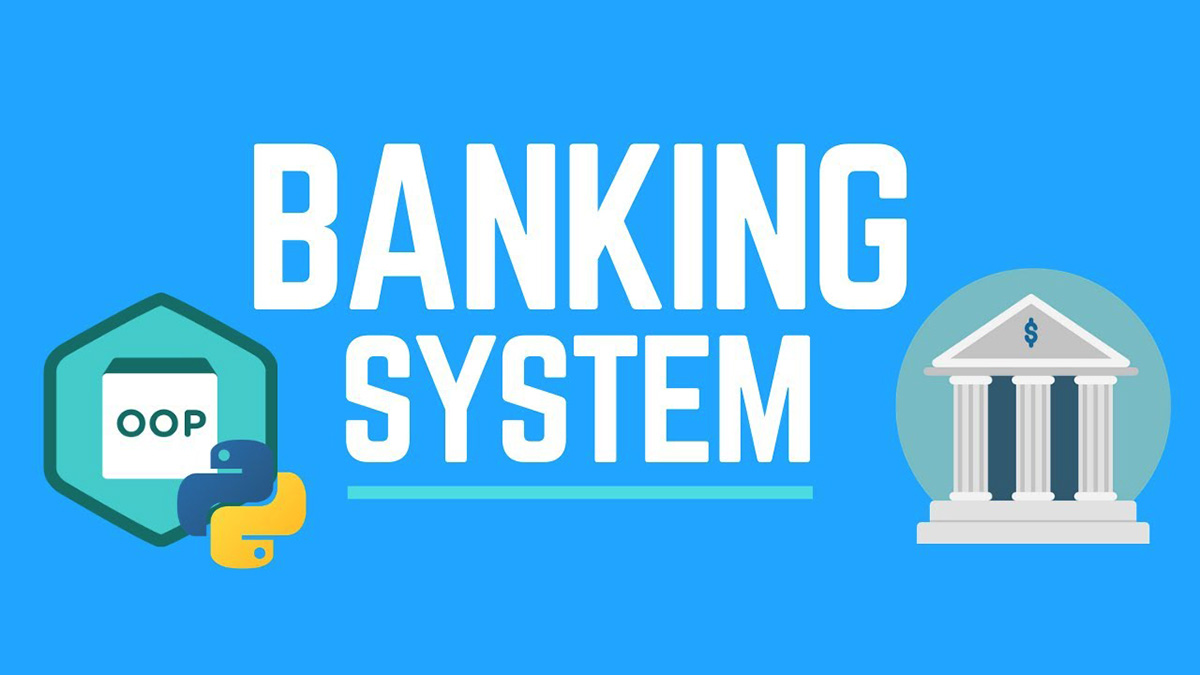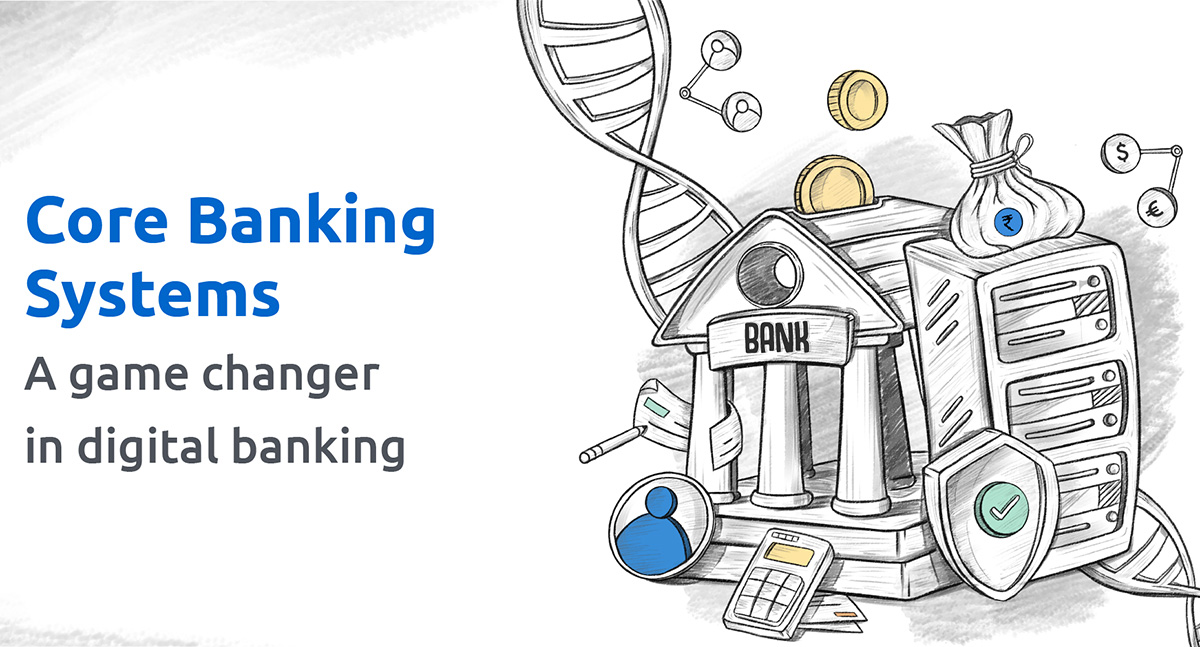

Finance
What Is Early Warning System In Banking
Published: October 11, 2023
Learn about the importance of early warning systems in banking and how they contribute to financial stability. Explore the role of finance in identifying and addressing potential risks.
(Many of the links in this article redirect to a specific reviewed product. Your purchase of these products through affiliate links helps to generate commission for LiveWell, at no extra cost. Learn more)
Table of Contents
- Introduction
- Definition of Early Warning System
- Importance of Early Warning System in Banking
- Components of Early Warning System
- Data Collection and Analysis
- Early Warning Signals
- Implementation of Early Warning System in Banks
- Benefits of Early Warning System in Banking
- Challenges and Limitations of Early Warning System
- Conclusion
Introduction
In the ever-evolving world of finance, staying ahead of potential risks and challenges is crucial for the stability and success of banking institutions. One such tool that banks use to mitigate risks is an Early Warning System (EWS). An Early Warning System is a proactive mechanism designed to identify and address potential financial distress in a timely manner. It enables banks to monitor and manage risks effectively, thereby safeguarding their financial health.
The primary objective of an Early Warning System in banking is to provide an early indication of adverse trends in loan portfolios and overall financial performance. By detecting signals of potential defaults or liquidity issues, banks can take appropriate corrective actions to minimize the impact and prevent financial crises.
The implementation of an Early Warning System is crucial in today’s complex and volatile financial landscape. It helps banks anticipate and respond to emerging risks, enabling them to protect their assets, stakeholders, and the overall stability of the financial system.
Throughout this article, we will delve deeper into the definition, importance, components, data collection, analysis, early warning signals, implementation, benefits, challenges, and limitations of an Early Warning System in the banking sector.
Definition of Early Warning System
An Early Warning System (EWS) in the context of banking is a set of processes, tools, and methodologies designed to monitor and identify warning signals of potential financial distress or risks faced by a bank. It serves as a proactive mechanism that enables timely detection and mitigation of risks before they escalate into significant problems.
The EWS acts as a surveillance system that monitors various indicators and variables to identify deviations from normal patterns. These indicators can include factors like loan delinquency rates, liquidity ratios, asset quality, profitability, capital adequacy, and macroeconomic indicators.
The primary purpose of an Early Warning System is to provide prompt alerts and insights to stakeholders, including bank management, regulators, auditors, and investors. It enables them to take necessary actions to mitigate risks and prevent or minimize potential losses.
The EWS framework consists of three main components:
- Data Collection: Gathering relevant data from various internal and external sources, such as financial statements, customer data, economic reports, and industry trends.
- Data Analysis: Analyzing the collected data using statistical models, ratios, and benchmarks to detect early warning signals and identify potential risks.
- Alert Mechanism: Notifying the appropriate stakeholders about the identified risks through automated alerts, reports, dashboards, and other communication channels.
It is important to note that an Early Warning System is not a crystal ball that can predict the future with certainty. Instead, it provides valuable insights and indications of potential risks based on historical trends, statistical analysis, and expert judgment.
By implementing an Early Warning System, banks can enhance their risk management capabilities, make informed decisions, and effectively address potential threats. It helps them maintain financial stability, protect their reputation, and build trust among their stakeholders.
Importance of Early Warning System in Banking
The use of an Early Warning System (EWS) in banking is of paramount importance due to the numerous benefits it provides. Let’s explore some of the key reasons why EWS plays a vital role in ensuring the stability and success of banks:
1. Risk Identification and Mitigation: An Early Warning System helps banks identify potential risks and vulnerabilities at an early stage. By analyzing various indicators and signals, such as deteriorating loan performance or declining profitability, the EWS enables banks to proactively address these risks before they escalate into significant problems. This timely risk mitigation helps prevent financial crises and potential losses.
2. Enhanced Decision-Making: With the insights provided by an EWS, banks can make more informed and data-driven decisions. By having a comprehensive view of the overall financial health and risk profile of the institution, bank management can effectively allocate resources, set risk appetites, and devise appropriate strategies. This results in better decision-making and improved performance.
3. Regulatory Compliance: Regulatory bodies require banks to have robust risk management frameworks in place. An Early Warning System enables banks to comply with these regulatory requirements by ensuring adequate monitoring and mitigation of risks. By having an effective EWS, banks provide regulators with the necessary data and reports to demonstrate their risk management capabilities.
4. Financial Stability: The stability of the banking sector is essential for the overall stability of the economy. An Early Warning System helps identify potential risks and weaknesses within individual banks and the financial system as a whole. By addressing these risks in a timely manner, banks contribute to the overall financial stability and minimize the likelihood of systemic crises.
5. Investor Confidence: Investors, both individual and institutional, rely on banks to safeguard their investments. An EWS instills confidence in investors by demonstrating that the bank is actively monitoring and managing risks. This transparency and proactive approach towards risk management enhance investor trust and attract new investments.
6. Competitive Advantage: Banks that have a robust Early Warning System gain a competitive edge in the market. As the banking industry becomes increasingly competitive, having the ability to identify and address risks early on allows banks to stay one step ahead. This helps maintain customer trust, attract new clients, and outperform competitors.
7. Crisis Preparedness: While an EWS aims to prevent crises, it also helps banks prepare for potential downturns or economic shocks. By continuously monitoring early warning signals, banks can establish contingency plans and develop strategies to navigate through challenging times. This preparedness reduces the impact of crises on the bank’s operations and profitability.
In summary, an Early Warning System is a critical tool for banks to identify, monitor, and mitigate risks effectively. It enhances decision-making, ensures regulatory compliance, promotes financial stability, boosts investor confidence, provides a competitive advantage, and prepares banks for potential crises. By implementing a robust EWS, banks can proactively manage risks and safeguard their long-term success in an ever-changing financial landscape.
Components of Early Warning System
An Early Warning System (EWS) in banking comprises several key components that work together to identify, monitor, and address potential risks. These components provide a comprehensive framework for effective risk management. Let’s take a closer look at the main components of an EWS:
1. Data Collection: The first component of an EWS involves gathering relevant data from various sources. This includes internal data from the bank’s systems, such as loan portfolios, financial statements, and customer data. External data, such as industry trends, market conditions, and macroeconomic indicators, is also collected. The data collected should be accurate, comprehensive, and timely to ensure the effectiveness of the EWS.
2. Data Analysis: Once the data is collected, it needs to be analyzed to identify early warning signals. This component involves applying various analytical techniques, statistical models, and financial ratios to the collected data. The analysis aims to identify trends, deviations, and anomalies that might indicate potential risks. The use of advanced analytical tools and algorithms can help in uncovering patterns and detecting risks more efficiently.
3. Risk Indicators: Risk indicators are the key variables or metrics that act as early warning signals in the EWS. These indicators can vary depending on the specific risk being monitored. For example, in credit risk management, the indicators could include loan delinquency rates, debt service coverage ratios, and credit ratings. Each bank needs to identify and define its set of risk indicators based on its unique risks and business model.
4. Alert Mechanism: The alert mechanism is responsible for notifying the relevant stakeholders about the identified risks and triggers. This component ensures timely communication and action. Automated alerts, reports, dashboards, and notifications are generated based on predefined thresholds or detected patterns. The alert mechanism should be customizable, allowing stakeholders to receive alerts based on their specific roles and responsibilities.
5. Risk Assessment: Risk assessment is the process of evaluating the identified risks in terms of their potential impact and likelihood. This component helps prioritize risks and allocate resources for mitigation. Risk assessment involves conducting in-depth analysis, scenario modeling, stress testing, and sensitivity analysis. It helps banks understand the severity of risks and their potential consequences on the bank’s financial position and performance.
6. Risk Mitigation Strategies: Once the risks are identified and assessed, the next component of the EWS is to develop appropriate risk mitigation strategies. This involves formulating action plans, setting risk tolerance limits, and implementing controls to address the identified risks. Risk mitigation strategies can include measures like loan restructuring, credit monitoring, improving underwriting processes, diversifying loan portfolios, or implementing market hedges.
7. Monitoring and Review: The EWS is an ongoing process that requires continuous monitoring and review. This component involves tracking the effectiveness of risk mitigation strategies, reassessing risks, and adjusting the EWS components as needed. Regular review and evaluation help ensure that the EWS remains relevant and responsive to emerging risks and market dynamics.
By integrating these components, banks can develop a robust and effective Early Warning System. These components work in synergy to provide timely insights, support informed decisions, and enable prompt action to mitigate potential risks. A well-designed EWS enhances risk management practices, improves the bank’s resilience, and contributes to its long-term success in a dynamic banking environment.
Data Collection and Analysis
Data collection and analysis are crucial components of an effective Early Warning System (EWS) in banking. The quality, accuracy, and timeliness of data play a vital role in identifying potential risks and taking proactive measures. Let’s explore the process of data collection and analysis in more detail:
Data Collection: The first step in the data collection process is identifying the relevant data sources. These sources can include internal data from the bank’s systems, such as loan databases, financial statements, cash flow records, and customer information. Additionally, external data sources, such as economic indicators, market data, and industry reports, provide valuable insights into the overall economic environment and specific sectors.
Once the sources are identified, data is collected through various methods. This can involve automated data extraction from internal systems, manual data entry, or acquiring data from external sources through subscriptions or collaborations. It is crucial to ensure the integrity and accuracy of the collected data by implementing data validation processes and maintaining data governance practices.
Data Analysis: After the data is collected, it is subjected to rigorous analysis to identify potential risks and early warning signals. There are various analytical techniques, statistical models, and financial ratios employed in this process.
Statistical analysis helps identify patterns, trends, and anomalies in the data. Time series analysis can reveal historical patterns of risks and identify any deviations from those patterns. Additionally, regression models can be used to identify relationships and dependencies between different variables, aiding in the detection of potential risks.
Financial ratios are also important tools in data analysis. Ratios like liquidity ratios, solvency ratios, and profitability ratios provide insights into the financial health of the bank and can indicate potential risks. By comparing these ratios to industry benchmarks and historical data, banks can assess their performance and identify areas of concern.
Advanced analytics techniques, such as machine learning and artificial intelligence, are also employed to enhance data analysis capabilities. These techniques can uncover complex patterns and correlations in large datasets, improving the accuracy and efficiency of risk detection.
The analysis phase involves not only quantitative analysis but also qualitative analysis. Expert judgment and subjective assessments are important components of the analysis process. Experience and domain knowledge allow experts to interpret the data and identify risks that may not be captured by quantitative measures alone.
Through data analysis, potential risks and early warning signals are identified. These signals can include increasing non-performing loans, deteriorating asset quality, declining profitability, liquidity issues, and adverse market trends. The analysis helps prioritize risks, develop risk mitigation strategies, and trigger timely alerts to stakeholders.
Overall, the data collection and analysis phase of an Early Warning System ensures that banks have access to accurate and reliable information about their risks and financial health. By leveraging both quantitative and qualitative analysis techniques, banks can proactively identify and address potential risks, mitigating the impact on their operations and financial stability.
Early Warning Signals
Early warning signals are crucial indicators that enable banks to identify potential risks and take preemptive measures to mitigate them. These signals serve as alarms, highlighting emerging problems before they escalate into significant issues. Let’s explore some common early warning signals in banking:
1. Deteriorating Asset Quality: An increase in non-performing loans (NPLs) and a decline in the quality of assets can be a warning sign of potential credit risks. Banks closely monitor indicators like NPL ratios, loan delinquency rates, and deteriorating collateral values to identify early signs of asset quality deterioration.
2. Declining Profitability: A sustained decrease in profitability can indicate underlying issues and potential risks. Banks analyze indicators such as net interest margins, return on equity (ROE), and efficiency ratios to assess profitability trends. A downward trend in these ratios can signify profitability challenges or inefficient operations.
3. Liquidity Issues: Liquidity problems can have severe consequences for a bank’s stability. Early warning signals of liquidity issues include a decrease in liquid assets, rising funding costs, and difficulties accessing funding markets. Monitoring of liquidity ratios, such as the loan-to-deposit ratio and the net stable funding ratio, enables banks to identify potential liquidity risks.
4. Market Dynamics: Banks track macroeconomic indicators, industry trends, and market conditions as early warning signals. Rapid changes in interest rates, economic downturns in specific sectors, or market volatility can signal potential risks. Monitoring these external factors helps banks assess their exposure to market risks and make informed decisions.
5. Compliance and Regulatory Issues: Non-compliance with regulations, legal violations, or regulatory scrutiny can be early warning signals of potential risks. Banks closely monitor their compliance with regulatory requirements, industry standards, and internal policies to detect any deviations or potential breaches.
6. Capital Adequacy: A decline in capital adequacy ratios, such as the common equity tier 1 (CET1) ratio or the capital adequacy ratio (CAR), can indicate potential risks to a bank’s financial stability and solvency. Monitoring these ratios allows banks to identify and address capital-related risks in a timely manner.
7. Customer and Concentration Risks: Changes in customer behavior, customer defaults, or overdependence on a specific customer or industry can be early warning signals. Banks analyze customer creditworthiness, account activity, and concentration of exposures to identify potential risks arising from their customer base.
8. Internal Control Weaknesses: Inefficient internal controls, weak risk management systems, or failures in governance can be early warning signals of potential risks. Regular internal audits, risk assessments, and internal control evaluations help banks identify weaknesses and areas that require improvement.
These are just some examples of early warning signals that banks should monitor to proactively manage potential risks. It is important to note that the significance and relevance of these signals may vary across banks depending on their business models, risk appetite, and operating environments. Therefore, banks should develop customized early warning signal frameworks tailored to their specific needs and risk profiles.
Identifying and monitoring early warning signals allows banks to take prompt actions, implement risk mitigation strategies, and safeguard their financial stability. By leveraging these signals, banks can strengthen their risk management practices and enhance their resilience in an ever-changing banking landscape.
Implementation of Early Warning System in Banks
Implementing an Early Warning System (EWS) in banks requires careful planning, collaboration, and integration of various components within the organization. Successful implementation of an EWS involves the following key steps:
1. Define Objectives and Scope: Banks need to clearly define the objectives and scope of their EWS implementation. This includes identifying the specific risks they want to monitor, the desired outcomes, and the stakeholders involved. By setting clear objectives, banks can align their implementation efforts and ensure that the EWS meets their specific needs.
2. Establish Data Governance: A robust data governance framework is essential to ensure the availability, integrity, and quality of data. Banks need to establish processes, policies, and controls for data collection, storage, cleaning, and validation. Implementing data governance practices helps ensure that the EWS operates on accurate and reliable information.
3. Select Appropriate Tools and Technology: Banks need to select the right tools and technology to support their EWS implementation. This may include data management systems, risk modeling software, analytics platforms, and visualization tools. The chosen tools should align with the bank’s data infrastructure and IT capabilities to enable seamless integration and efficient data analysis.
4. Develop Risk Models and Indicators: Banks need to develop risk models and indicators specific to their risk appetite and business model. This involves defining key risk indicators (KRIs) and establishing thresholds or trigger points for each indicator. Risk models should consider historical performance data, industry benchmarks, and expert judgment to effectively identify early warning signals.
5. Implement Automated Data Collection and Reporting: To streamline the EWS process, banks should implement automated systems for data collection and reporting. This reduces manual effort, increases efficiency, and ensures real-time availability of data. Automated reporting tools and dashboards enable stakeholders to access timely and relevant information for decision-making and risk management.
6. Train and Educate Employees: Employees play a crucial role in the successful implementation and operation of an EWS. Banks need to provide comprehensive training and education to employees on the EWS framework, risk identification, data analysis techniques, and the interpretation of early warning signals. This ensures that employees understand the purpose and functionality of the EWS and can effectively contribute to its operation.
7. Establish Governance and Monitoring: Effective governance and monitoring mechanisms are essential to ensure the ongoing effectiveness of the EWS. Banks should establish dedicated committees or teams responsible for overseeing the EWS implementation, monitoring its performance, and regularly reviewing its efficacy. This includes conducting periodic audits, risk assessments, and internal controls evaluations.
8. Continuous Improvement: An EWS is not a static system; it requires continuous improvement and adaptation. Banks should continuously evaluate the performance of the EWS and make necessary adjustments based on changing risk profiles, industry dynamics, and regulatory requirements. Regular reviews and feedback loops ensure that the EWS remains relevant, effective, and aligned with the bank’s risk management objectives.
By following these steps, banks can implement a robust EWS that enables early risk detection, effective decision-making, and proactive risk management. Implementation of an EWS contributes to the overall risk culture and resilience of a bank, allowing it to navigate uncertainties and mitigate potential risks successfully.
Benefits of Early Warning System in Banking
An Early Warning System (EWS) offers numerous benefits to banking institutions, enhancing their risk management capabilities and overall financial stability. Let’s explore the key benefits of implementing an EWS in banks:
1. Timely Risk Identification: The primary benefit of an EWS is the early identification of potential risks. By analyzing early warning signals and monitoring key risk indicators, banks can detect emerging risks at an early stage. This allows them to take prompt actions to mitigate the impact of risks and prevent them from escalating into significant problems.
2. Improved Decision-Making: An EWS provides banks with valuable insights and data-driven information about their risks. This leads to more informed decision-making processes. By having a comprehensive view of their risk profile, banks can allocate resources effectively, set risk appetite, and make strategic decisions backed by quantitative and qualitative analysis.
3. Enhanced Risk Management: The implementation of an EWS strengthens a bank’s risk management framework. It enables banks to proactively identify, assess, and mitigate risks. By monitoring key risk indicators and analyzing data, banks can take preventive measures and implement risk mitigation strategies to minimize potential losses and enhance their risk resilience.
4. Regulatory Compliance: An EWS helps banks meet regulatory requirements and comply with industry standards. By implementing an effective EWS, banks can demonstrate their commitment to risk management and provide regulators with necessary data and reports. This ensures regulatory compliance and helps build trust and credibility with regulators and stakeholders.
5. Financial Stability: Implementing an EWS contributes to the overall financial stability of a bank. By proactively identifying and addressing risks, banks can safeguard their financial health and prevent crises. This helps maintain confidence among stakeholders, protects the bank’s reputation, and contributes to the stability of the banking system as a whole.
6. Improved Investor Confidence: An EWS builds investor confidence by demonstrating that the bank is actively monitoring and managing risks. By providing timely and accurate information, banks can instill trust and attract potential investors. Enhanced transparency and risk management practices contribute to a positive perception among investors, leading to increased investment opportunities.
7. Competitive Advantage: Banks with a well-implemented EWS gain a competitive edge in the market. An effective EWS allows banks to respond quickly to emerging risks, adapt to market changes, and make proactive decisions. This can help them differentiate from competitors, attract new customers, and maintain a strong market position.
8. Increased Operational Efficiency: An EWS streamlines risk management processes by automating data collection, analysis, and reporting. This enables banks to enhance operational efficiency, reduce manual effort, and focus resources on strategic risk management activities. By automating routine tasks, banks can allocate more time and resources to value-added activities.
9. Contingency Planning and Crisis Preparedness: An EWS aids banks in contingency planning and crisis preparedness. By continuously monitoring early warning signals, banks can anticipate and prepare for potential crises or economic shocks. This allows them to develop robust contingency plans, adapt business strategies, and minimize the impact of adverse events.
In summary, implementing an Early Warning System in banks offers significant benefits, including timely risk identification, improved decision-making, enhanced risk management, regulatory compliance, financial stability, investor confidence, competitive advantage, operational efficiency, and crisis preparedness. By leveraging these benefits, banks can navigate uncertainties, proactively manage risks, and foster long-term success in a rapidly changing financial landscape.
Challenges and Limitations of Early Warning System
While an Early Warning System (EWS) provides numerous benefits, it is important to acknowledge the challenges and limitations associated with its implementation and operation. Understanding these challenges helps banks develop strategies to overcome them and maximize the effectiveness of their EWS. Let’s explore some common challenges and limitations of an EWS:
1. Data Quality and Availability: One of the critical challenges of an EWS is ensuring the accuracy, completeness, and timeliness of data. Banks often face issues related to data quality, including data inconsistencies, missing data, and data integration difficulties. Insufficient availability of relevant data or delays in data acquisition can hinder the effectiveness of the EWS and impact the accuracy of risk assessment and identification.
2. Complexity of Risk Modeling: Developing risk models and indicators for the EWS requires expertise and resources. Risk modeling involves statistical analysis, complex algorithms, and predictive modeling techniques. Banks may face challenges in selecting and calibrating appropriate models, implementing them correctly, and ensuring their accuracy in capturing risks. The complexity of risk modeling can pose a limitation for banks with limited analytical capabilities.
3. Changing Risk Landscape: The financial landscape is constantly evolving, and new risks emerge over time. The EWS needs to adapt to these changing risks to remain effective. Banks may face challenges in identifying and incorporating emerging risks into their existing EWS framework. Continuous monitoring and updating of risk models and indicators are necessary to address new risk challenges effectively.
4. Data Interpretation and Contextual Analysis: Interpreting data and extracting meaningful insights from the EWS can be a challenge. The EWS may generate a significant amount of data and alerts, requiring careful analysis to separate false positives from real risks. Contextual analysis is essential to understand the underlying factors contributing to the early warning signals. Banks need skilled professionals who can analyze the data, interpret the results, and make informed decisions based on the EWS output.
5. Human Bias and Judgment: Despite the use of data-driven models, decision-making in an EWS is subject to human bias and judgment. The interpretation of early warning signals, setting risk thresholds, and determining appropriate actions often involve subjective assessments. Bias can introduce errors or overlook certain risks, limiting the effectiveness of the EWS. It is essential to mitigate bias through training, awareness, and consensus-driven decision-making processes.
6. Regulatory and Compliance Challenges: Compliance with regulatory requirements can present challenges for the implementation of an EWS. Different regulatory frameworks may impose specific reporting obligations or data security requirements. Ensuring alignment between the EWS and regulatory compliance can be complex, requiring continuous monitoring and adjustment to meet changing regulatory expectations.
7. Resource Constraints: Implementing and maintaining an effective EWS requires significant resources, including technology infrastructure, skilled personnel, and ongoing training. Smaller banks or those with limited budgets may face challenges in allocating sufficient resources to develop and operate a comprehensive EWS.
8. False Positives and False Negatives: An EWS may generate false-positive alerts, warning of potential risks that do not materialize, as well as false-negative results, failing to detect actual risks. Improper calibration of risk models, insufficient data accuracy, or inadequate analysis can contribute to false alarms or missed risks. Striking the right balance between sensitivity and specificity is crucial to minimize these types of errors.
Despite these challenges and limitations, banks can mitigate their impact by implementing robust data governance processes, investing in advanced analytics capabilities, fostering a risk-aware culture, and continuously monitoring and reviewing the effectiveness of their EWS. By addressing these challenges, banks can enhance their risk management practices and better navigate potential risks in a proactive manner.
Conclusion
An Early Warning System (EWS) is an invaluable tool for banks to identify, monitor, and address potential risks in a proactive manner. By collecting and analyzing relevant data, early warning signals can be detected, enabling timely risk mitigation and preventing significant financial distress. Through this article, we have explored the definition, importance, components, data collection, analysis, early warning signals, implementation, benefits, challenges, and limitations of an EWS in the banking sector.
Implementing an EWS offers numerous benefits to banks, including timely risk identification, improved decision-making, enhanced risk management, regulatory compliance, financial stability, investor confidence, competitive advantage, operational efficiency, and crisis preparedness. The EWS empowers banks to anticipate emerging risks, adapt their strategies, and navigate uncertainties effectively.
However, the implementation of an EWS comes with challenges and limitations. These include data quality, complexity of risk modeling, changing risk landscape, data interpretation, human bias, regulatory compliance, resource constraints, and the risk of false positives and false negatives. Despite these challenges, banks can overcome them by establishing strong data governance practices, investing in analytics capabilities, addressing human bias, and continuously monitoring and reviewing the effectiveness of their EWS.
It is crucial for banks to recognize that an EWS is not a standalone solution, but rather a component of a broader risk management framework. Continuous improvement, adaptation to evolving risks, and strong risk culture are essential for the sustained effectiveness of an EWS.
In conclusion, an Early Warning System plays a pivotal role in helping banks maintain their financial stability and navigate the complex and dynamic landscape of the financial industry. By implementing a robust and well-integrated EWS, banks can proactively identify and manage risks, make informed decisions, and ultimately ensure their long-term success in an ever-changing environment.














